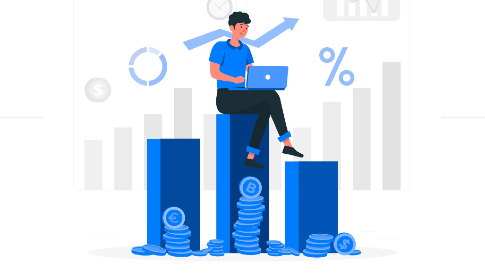As a business owner, your primary goal is to ensure that each penny spent on your company’s website contributes positively to its overall profitability and long-term success. This often involves strategic planning, constant evaluation, and adopting best practices to meet and exceed your unique objectives.
To ensure your company’s website is not just a digital business card but a dynamic tool that achieves enhanced ROI, some of the best practices range from analyzing performance data to the more nuanced approach of optimizing user experience.
Through these best practices, businesses can create a platform that attracts and converts them into loyal customers, thereby increasing the website’s contribution to the top and bottom lines.

Photo by Tranmautritam on Pexels
Financially speaking, businesses calculate website ROI by evaluating the net profit relative to the investment cost. This quantifiable approach underscores the importance of vigilant management and continuous improvement. By focusing on such metrics, you can identify areas of strength and address weaknesses, aligning every aspect of your digital presence with the company’s overarching goals.
Strategizing for Enhanced ROI
Maximizing return on investment for a company website requires a strategic approach centered on clear goals and informed decision-making. Here’s how to get enhanced ROI through focused planning and optimization.
Before starting any digital marketing campaign, you must establish business objectives and measurable goals. By defining success, you can determine your own set of key performance indicators (KPIs) to track progress toward these goals.
Whether aiming for increased brand awareness or higher sales, each objective needs aligned KPIs to measure its achievement.
Identifying Your Target Audience and Optimizing Content
Understanding your company’s ideal target audience is the start of any marketing campaign — a deep dive into audience demographics, interests, and behaviors helps tailor content and create campaigns that resonate. This interaction increases reach substantially and supports the development of more effective marketing channels.
Engaging website content is shaped not just by words but by the overall user experience. Incorporating SEO best practices increases search engine visibility while using compelling calls to action invites more user interaction. Updating your website’s content to match user search intent significantly boosts engagement.
Understanding and Leveraging Analytics
Tools like Google Analytics provide detailed information about traffic sources, user behavior, and engagement — analyzing metrics will help your business decide which strategies work and where to allocate resources for better optimization.
Additionally, implementing conversion rate optimization (CRO) techniques involves adjusting website elements to increase the percentage of visitors who take desired actions. Regular A/B testing can then reveal which approaches yield better results, driving more conversions.
Continuous Improvement through Testing and Data Analysis
Collecting feedback, employing testing methods, and thorough data analysis empower businesses to continually refine strategies. Embracing decision intelligence platforms can enhance the capacity to make data-driven adjustments for enhanced ROI.
Driving Revenue and Sales through Digital Marketing
To effectively boost revenue and sales, companies must leverage digital marketing strategies that enhance visibility, engage with potential customers, and optimize the user experience throughout the conversion funnel.
Harnessing SEO and Content Marketing
Search Engine Optimization (SEO) and content marketing — the two key elements for increasing visibility and attracting leads. By meticulously researching and targeting specific keywords, you can effectively and efficiently improve search engine rankings, significantly increasing website traffic.
Your goals in content marketing, both strategic and specific, contribute valuable information that addresses the interests and needs of different audiences targetted, establishing your brand as a thought leader in the industry and building trust.
Effective Email Marketing Strategies
Email marketing remains one of the key personalized ways to cultivate customer relationships and nurture leads without significantly sacrificing your marketing budget. Employing strategies like segmentation to adjust the messaging according to target demographics ensures that your communications resonate with their specific interests and needs. Such a personalized approach increases engagement, enhances the likelihood of conversions, and establishes long-term loyalty and trust.
Make it easy for potential clients to join your mailing list by including a link to the newsletter subscription page in your digital business card.
Scalability and Long-Term Growth
Prioritizing scalability can significantly amplify a company’s long-term growth and enhanced ROI. By leveraging the right technology and fostering robust customer relationships, businesses can ensure sustainable revenue growth and a stronger brand presence in the market.
Investing in Technology and Platforms
Companies aspiring for enduring success should invest in scalable technology and agency platforms to adapt to dynamic market demands.
This commitment to technology includes integrating flexible digital marketing strategies and deploying solutions like AI to glean valuable marketing analytics. These tech-driven platforms enable data-driven decisions, directly impacting ROI and customer experience.
Building and Nurturing Customer Relationships
Quality customer experience translates to higher customer lifetime value. Businesses that prioritize customer relationship management through consistent engagement, responsiveness, and appreciation practices foster loyalty.
Such practices improve brand reputations, as customer feedback and reviews become positive social proof for potential new clients.
Aligning Content with Industry Trends
Effective content marketing hinges on aligning with relevant industry trends to capture the interest of a target audience.
By staying updated with the latest developments and infusing these insights into content, companies ensure they are seen as thought leaders, thus boosting digital marketing ROI and establishing a brand that resonates with their industry’s evolution.
Realizing the Power of Referrals and Social Proof
Activating a referral program harnesses the power of social proof, an essential component in scaling a business. Recommendations from satisfied clients act as a catalyst for new customer acquisition, enhancing the company’s brand and agency platform.
Social proof builds trust, encouraging more clients to commit to the brand and participate in its growth story.
Photo by Sora Shimazaki on Pexels
Conclusion
Strategic planning and meticulous execution of a web strategy are crucial for enhancing a company’s website’s ROI. Companies should prioritize user experience (UX) and responsive design, as these elements fundamentally influence visitor engagement and conversion rates.
To keep up with advancements in consumer demands and technology, businesses need to implement a cycle of frequent testing and improvement. Tools such as A/B testing can serve as effective means to compare different website versions and pinpoint the most effective elements contributing to enhanced ROI. Ultimately, web design’s return on investment hinges on a business’s ability to effectively marry aesthetics with functionality, creating an online presence that resonates with the target audience and aligns with overarching marketing strategies.
